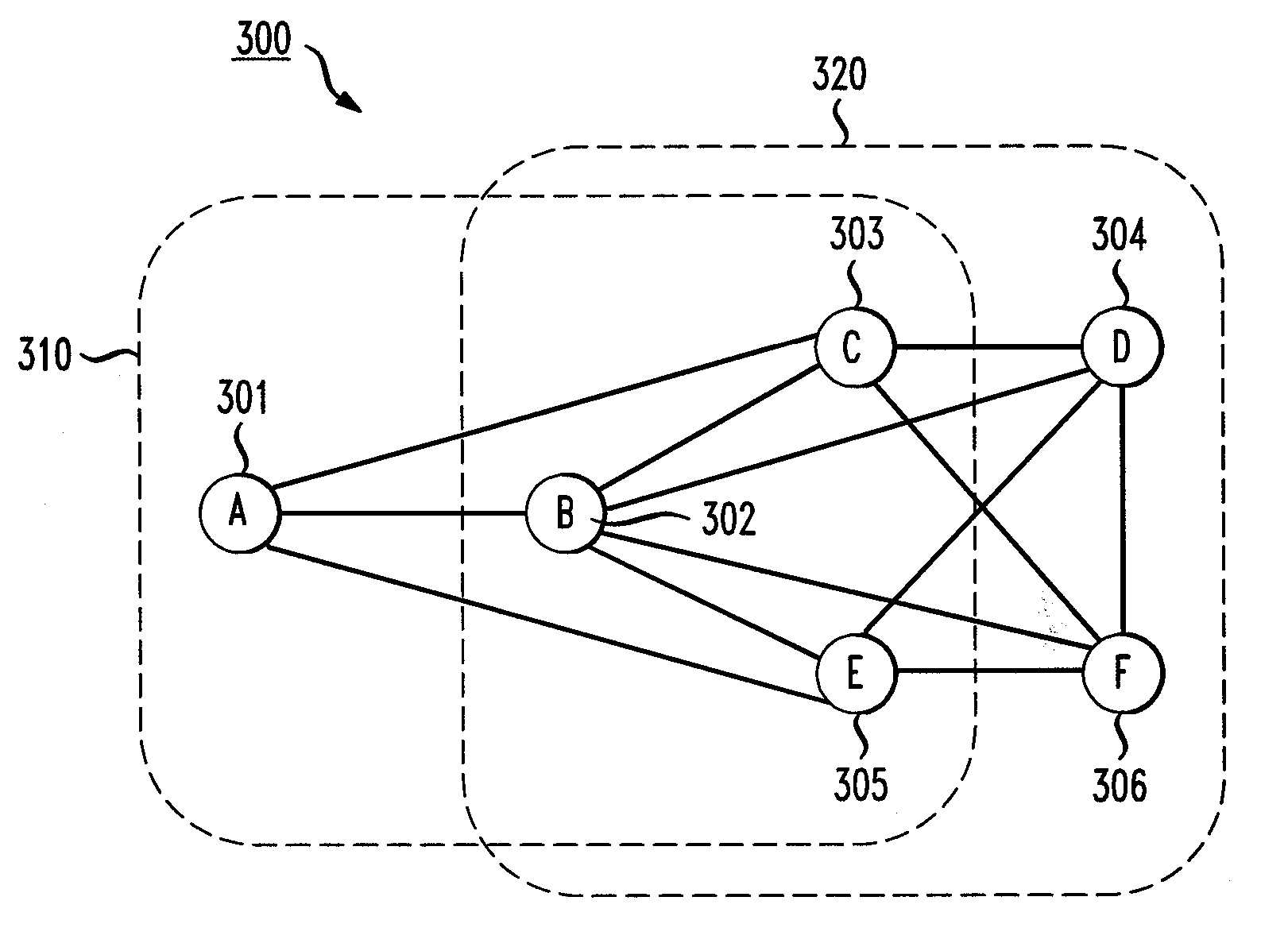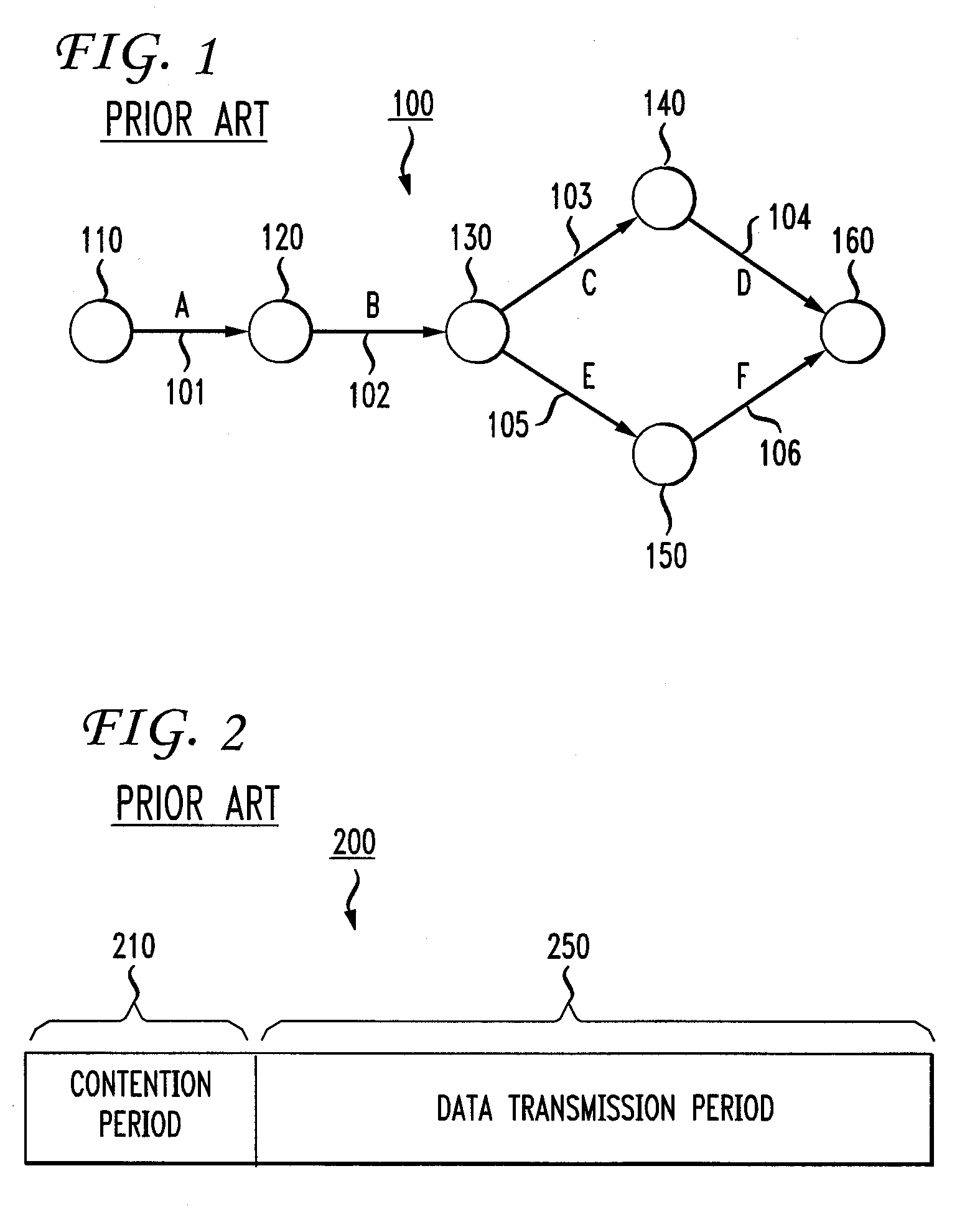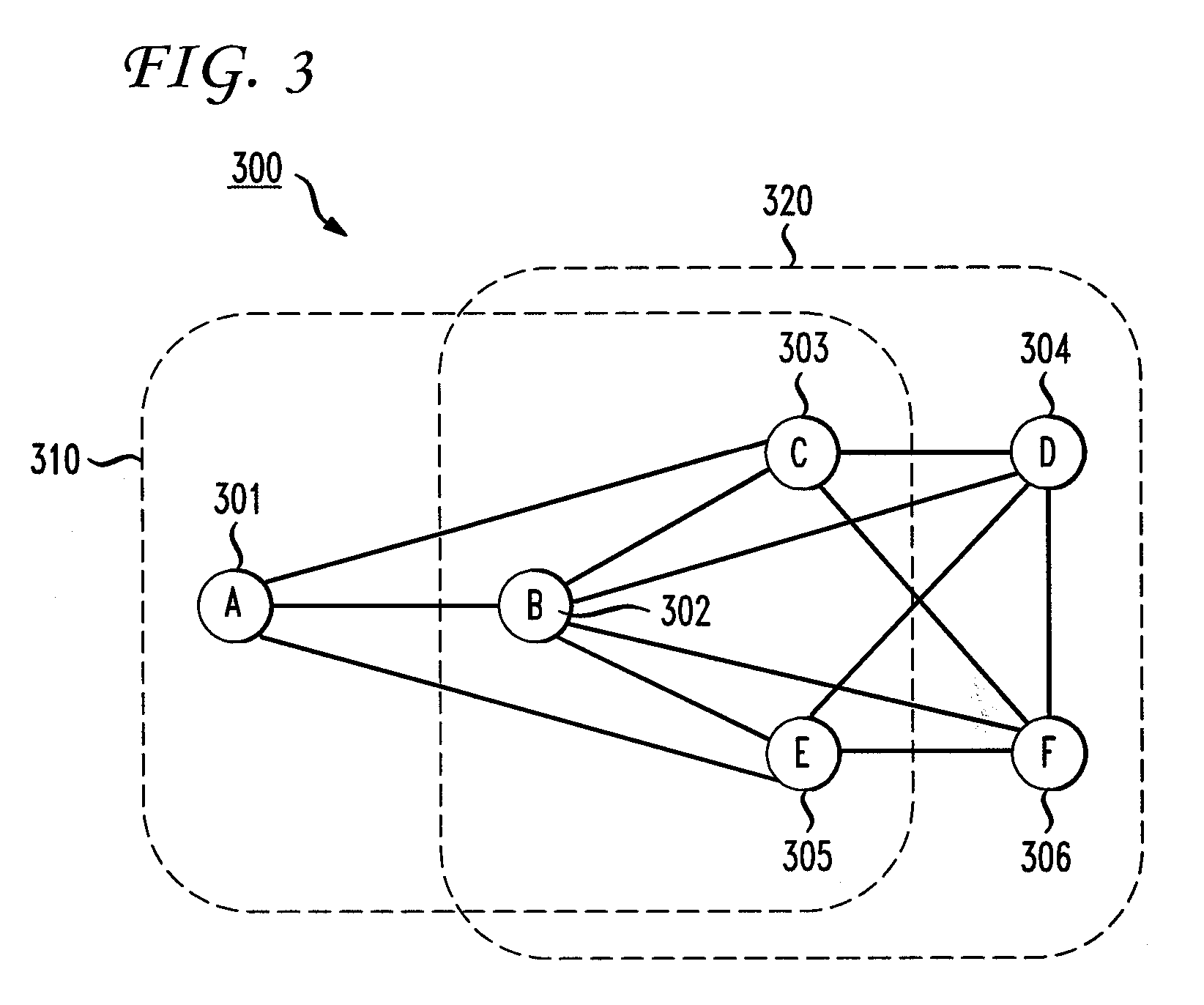Method and Apparatus for Lifetime Maximization of Wireless Sensor Networks
a wireless sensor and lifetime maximization technology, applied in data switching networks, power management, high-level techniques, etc., can solve the problems of significant energy constraints of sensor networks, inability to store the amount of energy stored in sensor batteries to such an extent, and cost and time-consuming replacement of sensors. the effect of significant energy constraints
- Summary
- Abstract
- Description
- Claims
- Application Information
AI Technical Summary
Benefits of technology
Problems solved by technology
Method used
Image
Examples
Embodiment Construction
[0014]FIG. 1 is a diagram illustrating a wireless communication network 100 suitable for implementation of an embodiment of the present invention. Wireless network 100 has, illustratively, a plurality of sensor nodes 110-160, each having one or more wireless antennas. Each node is, for example and without limitation, a wireless sensor, such as that discussed above, which gathers and transmits information in a distributed manner. Sensor nodes 110-160 are illustratively arranged in an ad hoc network linked together via illustrative network links 101-106, also denoted as links A-F. As is well known, an ad hoc network is a network in which nodes in the network directly discover and communicate in a peer-to-peer fashion without involving a central access point. In such a network, sensor nodes 110-160 transmit information from one sensor node to another via links 101-106 and are capable of autonomously synchronizing their activities.
[0015]FIG. 2 shows one illustrative embodiment of how s...
PUM
 Login to View More
Login to View More Abstract
Description
Claims
Application Information
 Login to View More
Login to View More - R&D
- Intellectual Property
- Life Sciences
- Materials
- Tech Scout
- Unparalleled Data Quality
- Higher Quality Content
- 60% Fewer Hallucinations
Browse by: Latest US Patents, China's latest patents, Technical Efficacy Thesaurus, Application Domain, Technology Topic, Popular Technical Reports.
© 2025 PatSnap. All rights reserved.Legal|Privacy policy|Modern Slavery Act Transparency Statement|Sitemap|About US| Contact US: help@patsnap.com



